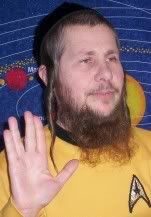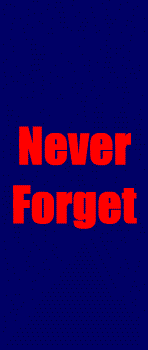
We come now to the most famous Jewish influence on Vulcan culture, the "live long and prosper" hand gesture. This "Vulcan salute, " as it has come to be called, was invented on the set by Leonard Nimoy during the filming of the second-season opener, "Amok Time." In this episode, Spock goes into something like a male estrus cycle, called pon farr in the Vulcan language. Comparing himself to a salmon swimming upstream to spawn, Spock tells Kirk that he must return to Vulcan to mate with his betrothed bride, T'Pring, or die trying. The wedding ceremony would be the first glimpse of Spock's homeworld in the series.
Nimoy felt that there should be some kind of distinctive greeting among Vulcans, analogous to a handshake or a bow. Alan Dean Foster's novelization, based on an early script, has Spock kneeling before the Vulcan matriarch, T'Pau, who places her hands on his shoulders, like royalty dubbing a knight. But Nimoy didn't care for this. Previous episodes had already established that Vulcans are touch telepaths. Therefore, a touch on the shoulders would be an invasion of privacy. Instead, Nimoy drew upon his own Jewish background to suggest the now-familiar salute. Back in the 1960s, hippies who watched "Amok Time" thought the salute was a variation of the two-fingered peace sign. But we Jews knew better. The Vulcan salute came not from protest marches, but from the pulpit of Nimoy's childhood synagogue.
The Vulcan greeting is based upon a blessing gesture used by the kohanim (koe-hah-NEEM) during the worship service. The kohanim are the genealogical descendants of the Jewish priests who served in the Jerusalem Temple. Modern Jews no longer have priests leading services as in ancient times, nor do we have animal sacrifices anymore. (Yes, people really do ask about that!) The sacrificial system ended with the destruction of the Temple by the Romans in the year 70. C.E. However, a remnant of the Temple service lives on in the "kohane blessing" ritual (duchenen in Yiddish) that is performed on certain holy days.
More at http://www.pinenet.com/~rooster/v-salute.html












No comments:
Post a Comment